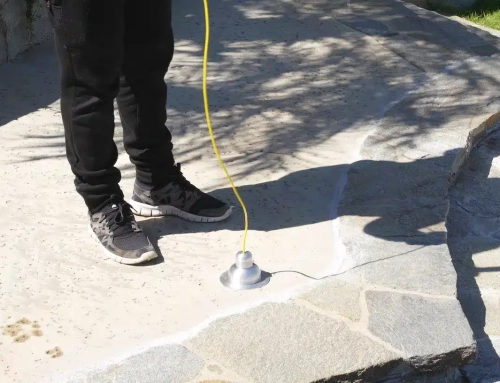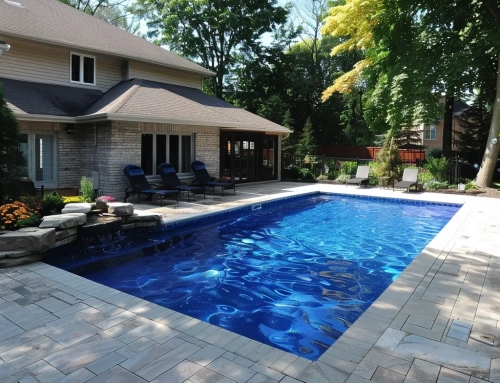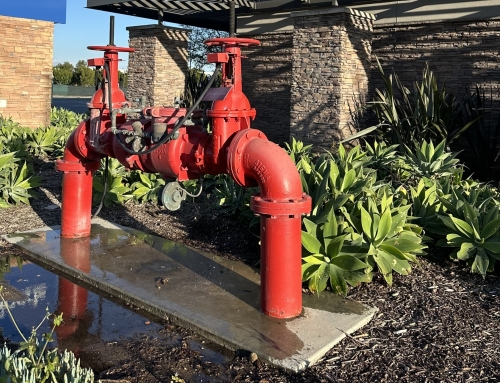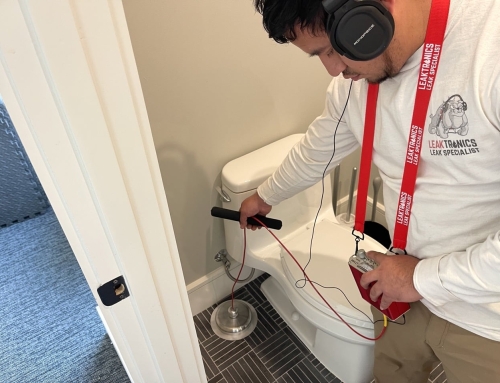A cracked coping does not mean the bond beam is broken, or that you have a water leak. The coping is a layer that sits on top of the bond beam as a decorative top around the edge of your pool. It is most often bonded to the top of the beam with mortar, sometimes color matched to create a custom design. It doesn’t always affect the beam below it.
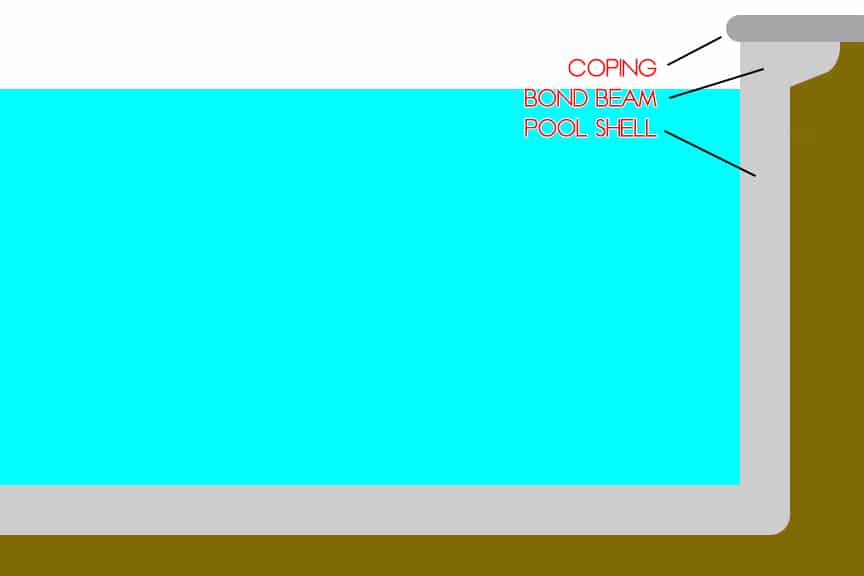
A bond beam is a thick layer of cement poured, or shot, on top fo the pool shell to bring the level of the pool wall up to the height of the landscape surrounding it. When a concrete, gunite or shotcrete, pool is installed, it is often a few inches below the level the unknown exact elevation. To bring the level of the pool wall to its final height, board forms are placed on top of the pool wall and concrete is poured to the desired level.
The place where the new concrete and old concrete meet is called a cold joint. This area is often right behind the tile line in an in-ground pool. It isn’t uncommon that the two areas of concrete will separate, but this is when you hear that a “leak is in the bond beam.”
When coping cracks, breaks or separates from the top of the bond beam, it can be a break or separation of the mortar that attached the coping to the bond beam. While fractures in the stone may be related to a vertical bond beam break below the coping, this isn’t always the case.
If the coping stone is broken from its bond and removable, you can lift it and see if there is a crack or break in the beam below it. Another option is to have a leak detection performed on the area where the broken coping is. Either by filling the pool to its proper level and listening along the bond beam/tile line with a PoolScope from LeakTronics, or even by using dye to see if water is being pulled; this will alert the pool professional to a leak.
If it is confirmed that there are no breaks in the bond beam or leaks between the bond beam and the pool shell below it, replacing coping may be as simple as cleaning out the old mortar that attaches it to the bond beam and re-inserting a new brick permanently to where it broke loose from.
If you’ve suspected that the cracked coping is a result of a broken bond beam, have a professional check it for leaks and breaks. Don’t let your pool sit idle with potential water loss. Aside from the obvious need to repair areas where water is leaking, having a broken coping tile around the edge of your pool is likely to be a safety hazard. Broken stone can be very sharp and if someone were to trip or fall on it, it could lead to a very painful altercation. Check for leaks and make repairs as soon as possible.
Find a professional leak detection technician in your area by visiting https://leaktronics.com/find-a-pro/ today.


